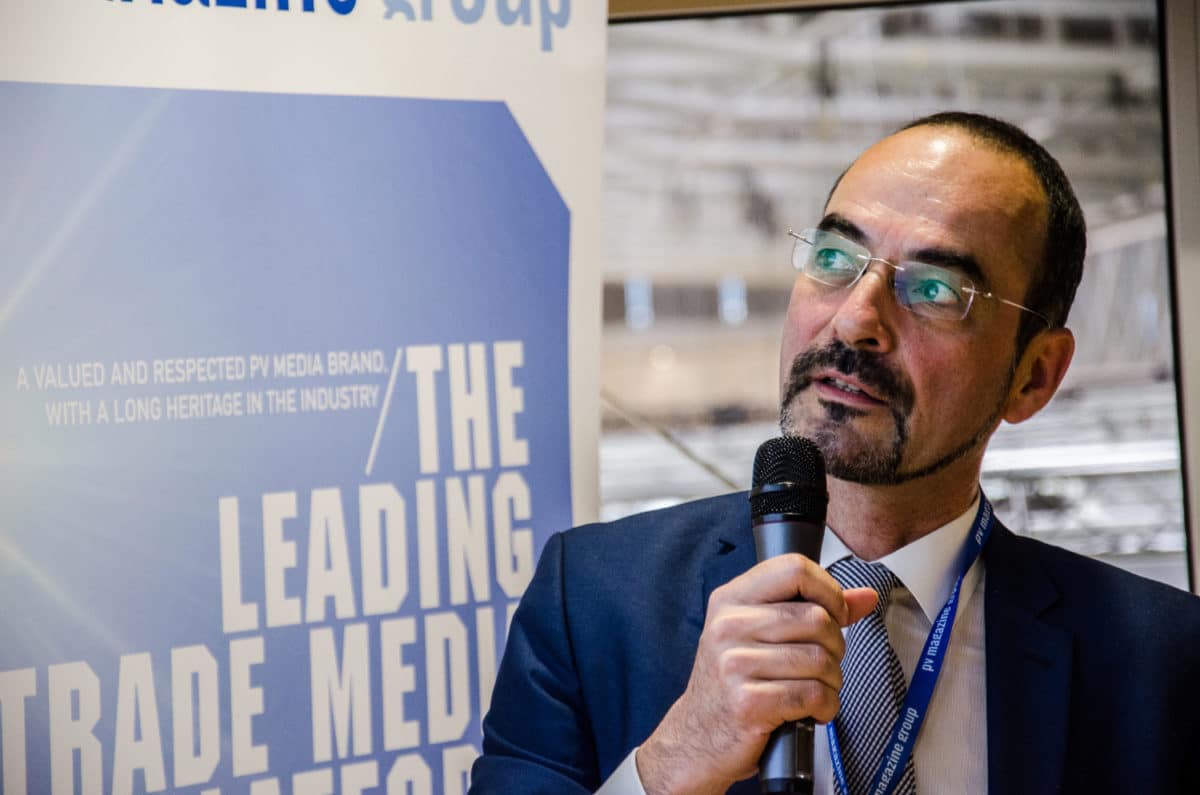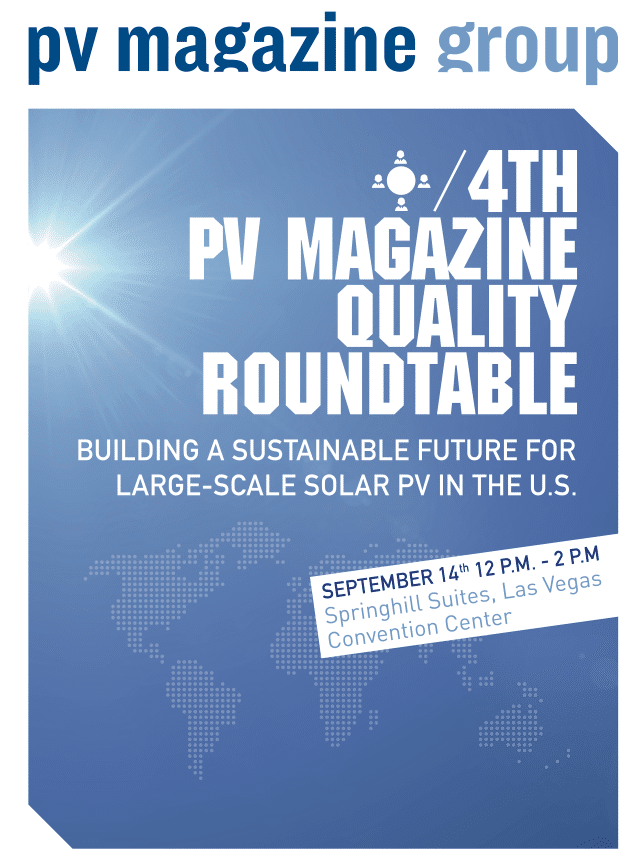Your company is American; it has offices in Europe and China, and is active all over the globe. Do you see differences in the discussion about module quality in Europe and in the US?
There are certainly a few differences in the approach of Europeans and Americans in buying modules. I would stress though that the differences are mostly due to historical facts. For example, the PV sector in Europe grew and matured at a time when projects were a lot smaller and bankability requirements a lot simpler. This meant that Europeans developed a different approach to checking quality, mainly fostered by the fact that there was a large base of European manufacturers. When projects grew both in size and geographical spread and the module procurement shifted to Asia, attitudes changed, and the issues found in fields and factories made the European buyers realize that they needed a very different, more systematic, “hands on”, 3rd party based approach.
On the other hand, the U.S. market initially grew at a very slow pace, and most of the installations were using modules from U.S. companies, some of them being also the developers. After the boom of the recent years, with projects reaching unprecedented sizes and PPAs signed at unheard-of lows, the banks really stepped in, and made sure that the buyers had very strict procedures when buying modules. This also pushed consolidation among the manufacturers, since banks would finance big projects, only if they were using components that had gone through extended testing, were supplied by sizeable manufacturers with a good track record, and had been produced in facilities closely monitored by 3rd parties.
However, I can say that nowadays big European developers, IPPs and EPCs that have a global presence, tend to adopt the same approach, as the bankability requirements got more sophisticated, and the industry matured overall.
Interested in discussing the question raised?
Come to our roundtable at SPI in Las Vegas, 12 p.m. to 2 p.m. on September 14.
-> More information
If you have examples of poor quality modules or installations and interesting discussion points – pv magazine would be interested in your story and will treat all submissions with the utmost confidentiality.
-> More information
To register for free, email us at:
-> roundtable@pv-magazine.com
You have collated some statistics. What are the most important outcomes of your quality analysis?
In the last few years, CEA has compiled detailed quality assurance data over many GWs of projects, produced in diverse facilities, covering mainly large project sizes. Tens of different defect species have been characterized and recorded, enabling us and our clients to monitor quality in depth and breadth, through risk analysis, and through applying variable statistics. These statistics reveal a simple truth; that the industry has been, and will be for a long time still, a very dynamic playing field, with constant challenges in all fronts: technology and cost-cutting pressures, trade restrictions, consolidations, speedy expansions and dizzying price slumps. Although the module quality is overall improving, the above pressure points, combined with the ever competitive, very low PPAs or FIT’s, keep the need for quality control always particularly relevant.
We see many module factories with variable quality, frequent material changes and a constant struggle to optimize cost. Defect rates and risk rates vary a lot, even at the same location in short periods. The risk of modules failing completely may not be very high, but even a few percent of lower yield due to quality issues, can make the difference between a good and a bad project.
Inline production monitoring, factory audits and pre-shipment inspections, together with sample lab testing, can give buyers unprecedented control over the quality of critical component, and mitigate all kinds of otherwise uncontrollable risks.
Which sort of quality issues are most common in the U.S. and which are the most relevant?
Microcracks, hot spots, junction box failures and PID are the leading issues seen in U.S. installations, speaking about the downstream sector. At the same time tariff wars have violently shaken the manufacturing landscape and forced buyers sometimes to choose more on practical and less on quality grounds. I would say that U.S. investors are well aware of the risks involved at the production phase, and understand the value of production monitoring. Focusing on downstream, U.S. investors should pay more attention in pre-installation sample testing and early stage diagnostics. Overall speaking, the sector is very professional and knows how to deal with most of the risks.
-> “Poor quality planning: Shifting the blame, passing the buck”
-> “Melting backsheets, broken cells, and hotspots”
-> “Burnt out, incompatible connectors”
Is PID relevant in the U.S.?
PID is now a very well understood and modeled effect, with robust testing available, that achieves effective risk containment. Raw material suppliers have developed improved solutions that most manufacturers have already adopted, together with modifying their processes. In this sense, PID became more and more a thing of the past, but may still plague older installations. Buyers are very aware of PID, and most big manufacturers test their products under strict test sequences.
Of course, grounding the negative string poles in plants with central inverters virtually eliminates the PID stress, as well as the use of double glass modules. However, string inverters don’t allow this solution, so smaller plants are more exposed to PID risks. As the cell processes are not very stable, PID control through 3rd party sample testing is highly recommended during the module manufacturing phase.
We heard that in the U.S. EPC don’t often opt for pre-installation inspections when modules are delivered. What is your experience? Is it the same in Europe?
It is true that although generally the U.S. investors approach module quality in a very mature and risk adverse manner, pre-installation inspections are not as common as in Europe. The fact is that modules can leave the production floor in a perfect condition, and arrive at the site with problems, due to bad practices in packaging or transportation. Europeans experienced these issues early on, and are aware of the risks. Handing over the responsibility at the various transportation phases is very important. The U.S. investors know this, and DDP deliveries are the norm in the U.S. However, although this practice transfers the responsibility to the seller up to the arrival of the goods to the job site, the buyer should do sample testing before installation to close any risk gaps. In general, the earlier the problems are detected, the easier and less costly it is to address them. Bad modules had better to be stopped before leaving the production floor, and if they get damaged on the way, they had better be spotted before installation.
Why don’t investors often request severe quality controls – Is it because they think EPCs are liable? Is this the case?
In many cases the EPCs take over the risk liability, but most will leave the project after they achieve a few years of PR targets. A PV plant has to deliver its predicted output for 20-25 years, not just 2-3. So, no matter how convenient it is for the PV plant owner to delegate all of the risk and procurement burden to the EPC, it is to their best interest to safeguard as diligently as possible the value of the project. Even a 1%-2% excess yield decrease during project lifetime, will shave a few cents/W off the project’s net present value. On the other hand, the actual cost of applying a comprehensive quality assurance program is a tiny fraction of the total project cost. Another substantial benefit is that projects accompanied with a complete folder containing daily detailed reports from production oversight and inspections, are much easier to finance or transact than projects that don’t. We see a trend for developers and IPPs to take over the procurement and quality risk management on themselves as they scale up.
You can meet George Toloupas at the 4 th pv magazine Quality Roundtable at SPI, were he and other experts will discuss examples of poor quality expriences and conclussions to be drawn.
Building a Sustainable Future for Large-Scale Solar PV in the U.S.
- 12 p.m. to 2 p.m. on September 14, 2016 during SPI in Las Vegas
- Springhill Suites at Las Vegas Convention Center
- Register at no cost at: roundtable( at )pv-magazine.com
- Target audience: Asset managers, EPCs, operations & maintenance suppliers (O&M), system designers and independent engineers, financial institutions, insurance companies, investors, system owners (utilities, gencos, IPPs, as well as C & I system owners), certification and testing bodies, research institutes and universities, industry associations, government entities, codes & standards and regulatory agencies.
- MCs: pv magazine
- More information
| Initiative sponsor partner: | Gold sponsor: | Gold sponsor: |
 |  | |
| Supported by: | Supported by: | |
 |
This content is protected by copyright and may not be reused. If you want to cooperate with us and would like to reuse some of our content, please contact: editors@pv-magazine.com.









By submitting this form you agree to pv magazine using your data for the purposes of publishing your comment.
Your personal data will only be disclosed or otherwise transmitted to third parties for the purposes of spam filtering or if this is necessary for technical maintenance of the website. Any other transfer to third parties will not take place unless this is justified on the basis of applicable data protection regulations or if pv magazine is legally obliged to do so.
You may revoke this consent at any time with effect for the future, in which case your personal data will be deleted immediately. Otherwise, your data will be deleted if pv magazine has processed your request or the purpose of data storage is fulfilled.
Further information on data privacy can be found in our Data Protection Policy.